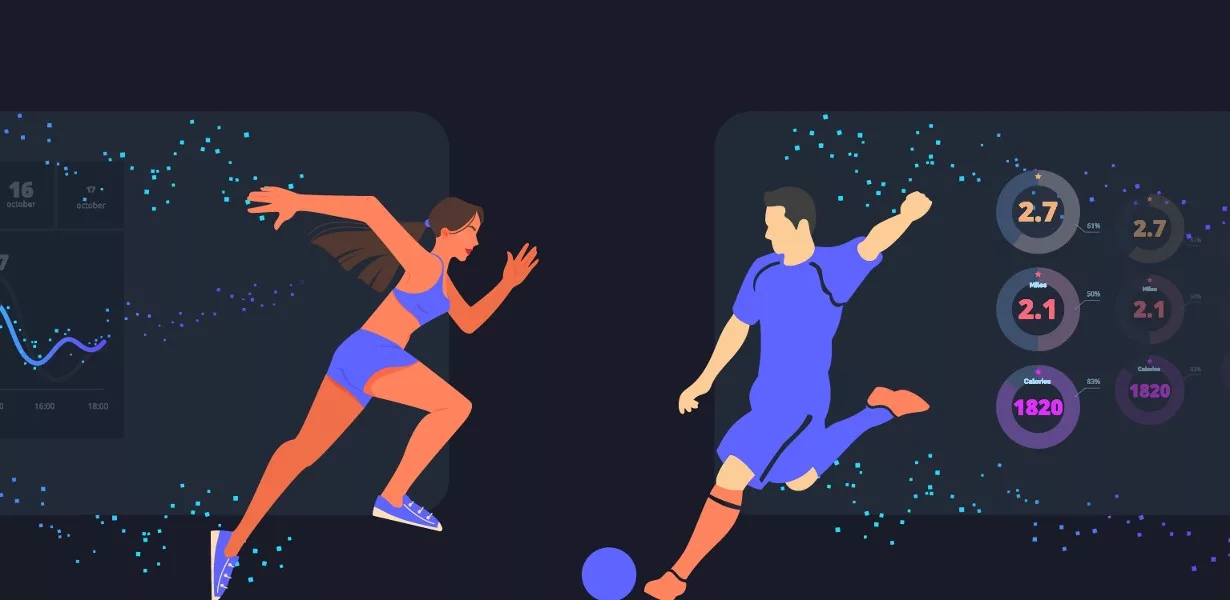
Welcome to our comprehensive guide on sports performance analytics, a game-changing field that empowers athletes and teams to unlock their full potential. In this article, we will explore the world of performance analytics in sports, shedding light on its benefits, applications, and how it can revolutionize athletic performance. Whether you’re a professional athlete, a coach, or a sports enthusiast, understanding the power of data analytics in sports performance is crucial for gaining a competitive edge. Join us as we embark on a journey into the realm of sports performance analytics.
The Significance of Data Analytics in Sports Performance
Data analytics in sports performance has emerged as a vital tool for athletes, coaches, and teams seeking to enhance their performance and achieve optimal results. Here are three actionable tips to help you leverage the power of sports performance analytics:
1. Embrace Data-Driven Decision Making: In the era of sports analytics, decisions are no longer based solely on intuition or experience. By harnessing the power of data, athletes and coaches can make informed decisions backed by evidence. Analyzing key performance indicators, such as player statistics, match data, and training metrics, provides valuable insights that can shape strategies, tactics, and training regimens.
2. Uncover Patterns and Trends: Sports performance analytics allows for the identification of patterns and trends that may go unnoticed by the naked eye. Through advanced statistical analysis and machine learning algorithms, vast amounts of data can be processed to uncover actionable insights. These insights may include player tendencies, team dynamics, optimal playing conditions, injury risks, and much more. By leveraging this information, athletes and teams can make data-backed adjustments to gain a competitive advantage.
3. Enhance Training and Recovery: Performance analytics in sports extends beyond match analysis. It plays a crucial role in optimizing training and recovery strategies. By monitoring individual player performance metrics, such as heart rate, speed, and workload, coaches can tailor training programs to meet specific needs. Furthermore, analytics can aid in injury prevention and rehabilitation by identifying potential risk factors and suggesting appropriate recovery protocols.
The Role of Technology in Sports Performance Analytics
Advancements in technology have revolutionized the field of sports performance analytics, enabling athletes and teams to collect, analyze, and interpret data like never before. Here are some of the cutting-edge technologies driving the evolution of sports performance analytics:
1. Wearable Sensors: Athletes now have access to wearable sensors that capture real-time data during training sessions and competitions. These sensors can track vital metrics such as heart rate, movement patterns, and even muscle activation. The data collected provides valuable insights into an athlete’s performance, fatigue levels, and areas for improvement.
2. Video Tracking Systems: Video tracking systems utilize computer vision algorithms to analyze player movements and interactions on the field. These systems can provide detailed information on positioning, passing accuracy, and tactical decision-making. Coaches and analysts can use this data to optimize strategies, identify strengths and weaknesses, and make data-driven adjustments to gameplay.
3. Biomechanical Analysis: Biomechanical analysis involves the study of an athlete’s movements and body mechanics to optimize performance and prevent injuries. Sophisticated motion-capture systems and force plates can measure joint angles, forces exerted, and muscle activations. This information helps in refining technique, identifying inefficiencies, and reducing the risk of injuries.
FAQs (Frequently Asked Questions)
Q1: How can sports performance analytics benefit individual athletes?
A1: Sports performance analytics can provide individual athletes with valuable insights into their performance, strengths, and areas for improvement. By analyzing personal data and comparing it with benchmarks or performance goals, athletes can identify specific areas to focus on, set targets, and track progress over time. Additionally, performance analytics can aid in injury prevention and optimizing recovery protocols.
Q2: Are sports performance analytics only relevant to professional athletes and teams?
A2: While sports performance analytics has gained significant traction in professional sports, its benefits extend beyond the elite level. Amateur athletes, recreational sports enthusiasts, and even coaches of youth teams can leverage performance analytics to gain insights, improve training methodologies, and enhance overall performance. The accessibility of technology and data-driven tools has made sports performance analytics more widely available and applicable across different levels of competition.
Q3: How can sports performance analytics contribute to team performance?
A3: Sports performance analytics can be a game-changer for teams. By analyzing team data, such as player positioning, passing accuracy, and defensive strategies, coaches can identify tactical adjustments, exploit opponents’ weaknesses, and optimize team dynamics. Furthermore, performance analytics can aid in talent scouting, player development, and optimizing team formations based on data-driven insights.
Q4: How can athletes and teams integrate sports performance analytics into their training routines?
A4: Integrating sports performance analytics into training routines involves collecting relevant data, analyzing it, and deriving actionable insights. Athletes and teams can leverage wearable sensors, video tracking systems, and biomechanical analysis tools to gather data during training sessions and competitions. This data can then be analyzed using specialized software or platforms to extract meaningful information. Coaches and athletes can work together to interpret the data, make data-driven decisions, and adjust training programs accordingly.
Q5: What are the ethical considerations in sports performance analytics?
A5: Ethical considerations in sports performance analytics revolve around data privacy, data ownership, and fair play. It is crucial to handle athletes’ personal data responsibly, ensuring compliance with privacy regulations and obtaining informed consent. Additionally, data ownership should be clearly defined to avoid disputes. Fair play is also a concern, as the use of performance analytics should not infringe upon the spirit of the game or give undue advantage.
Conclusion
Sports performance analytics has ushered in a new era of data-driven decision making and optimization in the world of sports. By embracing performance analytics, athletes and teams can gain valuable insights, enhance training methodologies, and make data-backed adjustments to achieve peak performance. The integration of technology, such as wearable sensors, video tracking systems, and biomechanical analysis tools, has further amplified the potential of sports performance analytics. As the field continues to evolve, it is essential for athletes, coaches, and sports enthusiasts to stay informed and leverage the power of data to unlock their full potential. So, dive into the world of sports performance analytics, harness the power of data, and elevate your game to new heights of success.
Advertisement









